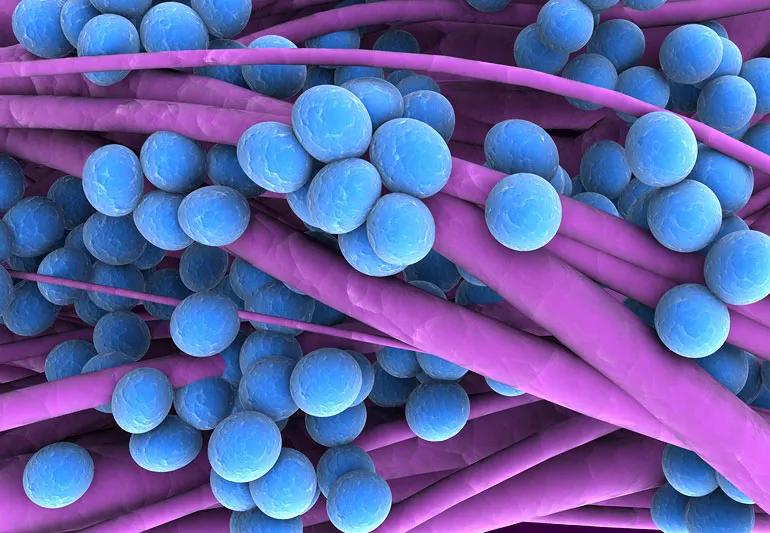Signs and symptoms of staph and MRSA infections

The bacteria that causes a staph infection, staphylococcus aureus, is all around you all the time. It lives on surfaces and on the ground. You might also carry it on your skin and in your nose. So how does it go from harmless companion to troublesome foe?
Advertisement
Cleveland Clinic is a non-profit academic medical center. Advertising on our site helps support our mission. We do not endorse non-Cleveland Clinic products or services. Policy
“Typically, we get along with staphylococcus just fine,” says family medicine physician Donald Ford, MD, MBA. But when staph enters your body through a nick or cut in your skin, it may result in an infection.
These infections are usually minor and can be treated with antibiotics. Staph can become much more serious, though — even life-threatening — if it somehow finds its way into your bloodstream, lungs, bones, joints or heart.
A staph infection might show up on your skin as:
Advertisement
Most staph infections on the skin are easy to treat and typically respond well to antibiotics or by draining the infected area, Dr. Ford says.
“We treat more superficial skin infections such as impetigo for a few days,” he says. “A deeper boil or an abscess may need to be drained and can take up to a few weeks to heal.”
If staph moves deeper into your body, it becomes dangerous and may require a longer course of treatment — or even hospitalization.
Serious forms of a staph infection include:
Some staph bacteria have become resistant to the antibiotics used to treat them. This is known as MRSA, which stands for methicillin-resistant staphylococcus aureus.
Most MRSA infections are skin infections, but it can also cause more serious infections. The infected wound may require surgical or local drainage. Your doctor likely will prescribe a stronger antibiotic to treat it as well.
Since staph is all around us, it’s not uncommon for a perfectly healthy person to get a staph infection. The best way to avoid it is to maintain good hygiene, Dr. Ford says.
If you think you have a staph infection, Dr. Ford suggests bringing it to your doctor’s attention or going to an emergency care center.
“Staph is sometimes a serious infection if left untreated. So it’s always a good idea to go see your doctor or another health care provider if you’re worried you might have a staph infection,” Dr. Ford says.
Advertisement
Learn more about our editorial process.
Advertisement

Covering your mouth when you cough and staying home when you’re sick are a couple ways to help keep yourself and others COVID-free

The virus often clears up on its own within two years, but it can also linger and can cause further complications

We don’t fully understand how cleanliness impacts immune system development, but we do know that preventing illness is important

This vital nutrient supports your health, but its role in COVID-19 prevention and treatment isn’t proven

Twice daily tick checks, the right bug sprays and long pants can help you prevent tick-borne diseases

If you have a weakened immune system, your risk for getting shingles a second or third time increases

Tetanus is easy to prevent but tough to treat — vaccines are your best defense

Germs spread quickly and easily, so covering your face, washing your hands and avoiding close contact are key

If you’re feeling short of breath, sleep can be tough — propping yourself up or sleeping on your side may help

If you fear the unknown or find yourself needing reassurance often, you may identify with this attachment style

If you’re looking to boost your gut health, it’s better to get fiber from whole foods